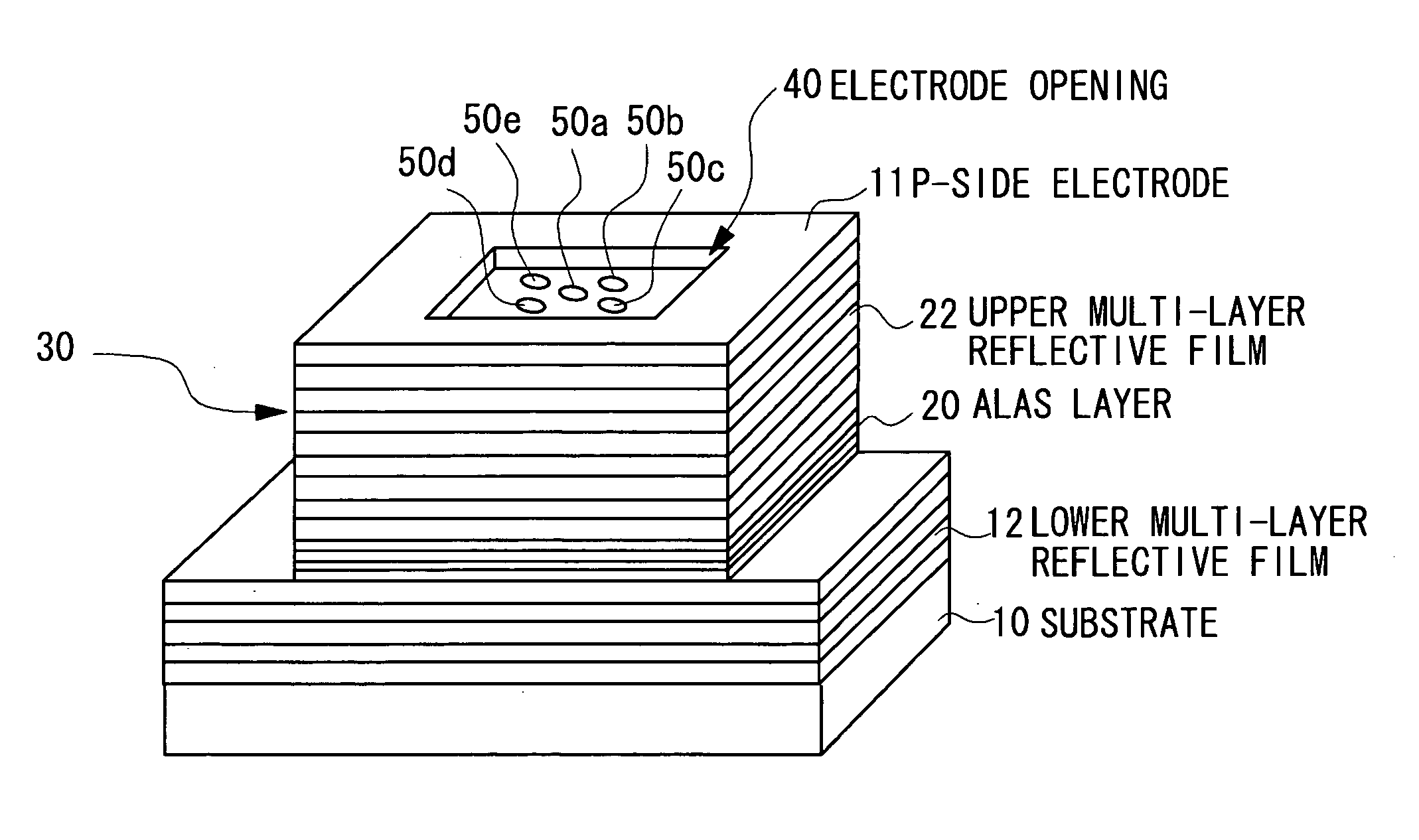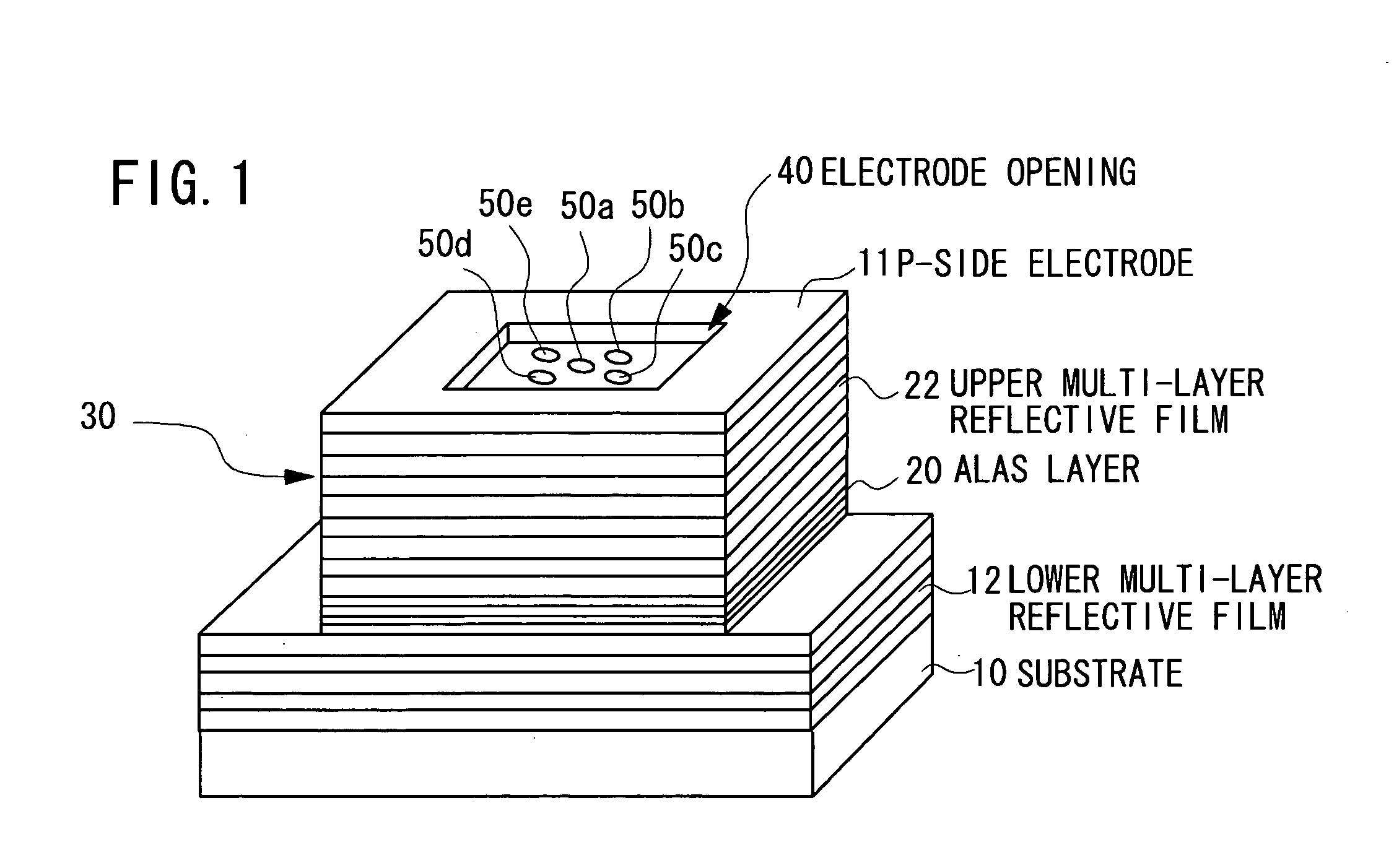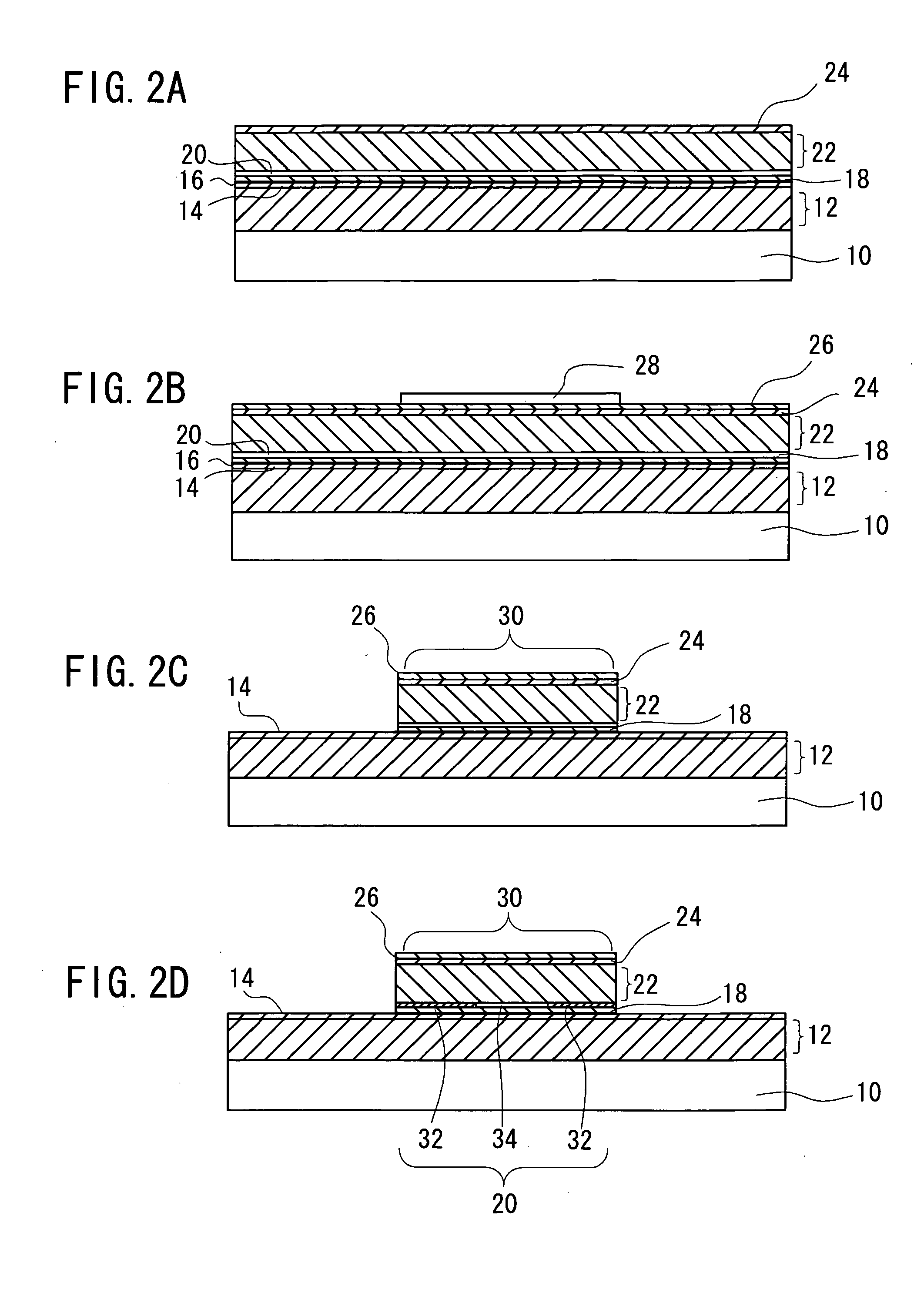[0008]When a VCSEL is used as a light source of, for example, an electrophotographic image forming apparatus (scanning
exposure apparatus) such as a laser printer, in order to obtain
high resolution, it is required that small light-emitting spots be connected on a surface of a photoconductor drum. In other words, because it is required that the
radiation light of the VCSEL be focused by a lens, a single-mode (fundamental
transverse mode lasing) is preferred whose
emission intensity distribution is
Gaussian-like. As a result, for applications such as a high-resolution laser printer, a VCSEL in which the diameter of the non-oxidized region is equal to or smaller than nearly 4 micrometers has been used.
[0008]When a VCSEL is used as a light source of, for example, an electrophotographic image forming apparatus (scanning
exposure apparatus) such as a laser printer, in order to obtain
high resolution, it is required that small light-emitting spots be connected on a surface of a photoconductor drum. In other words, because it is required that the
radiation light of the VCSEL be focused by a lens, a single-mode (fundamental
transverse mode lasing) is preferred whose
emission intensity distribution is
Gaussian-like. As a result, for applications such as a high-resolution laser printer, a VCSEL in which the diameter of the non-oxidized region is equal to or smaller than nearly 4 micrometers has been used.
[0012]An aspect of the present invention provides an optical
data processing apparatus including a light source, an optical
system that concentrates light from the light source to an optical data storage medium, and a mechanism that scans the concentrated
laser light on the optical data storage medium. The light source includes at least one Vertical-Cavity Surface-Emitting
Laser (VCSEL) device that emits
laser light, and the at least one VCSEL device includes an active region and a current-confined portion between first and second mirrors that form a vertical
resonator structure. In the current-confined portion, an opening having a diameter larger than about 4 micrometers is formed for current injection.
[0057]FIG. 13C shows the relation between the bias current and light output (shown by circles) and
divergence angle (shown by triangles) for a VCSEL that generates a high-order single-mode lasing. For comparison, measurements obtained for a normal multi-mode VCSEL (FIG. 13B), and a single-mode VCSEL (FIG. 13A) are also shown. The diameter of the non-oxidized region of the multi-mode VCSEL is 8 micrometers, same as that of the high-order single-mode VCSEL; and that of the single-mode VCSEL is 3 micrometers.
[0058]As is evident from the measurements, the
divergence angle of the high-order single-mode VCSEL is stable over a wide light output range, and its variation is as small as that of the single-mode VCSEL. For example, in FIG. 13C, the
divergence angle at the time the light output starts is about 20 degrees. And the
divergence angle at the time the light output reaches a peak at about 5 mW is about 21 degrees, and thus its variation is equal to or smaller than about 5%. Rather, as its opening diameter is larger than that of the single-mode VCSEL, absolute value of the
divergence angle is smaller than that of the single-mode VCSEL. Therefore, it can be found that, it is possible to connect small light-emitting spots even in a high-order
transverse mode lasing, as same as in the case of a fundamental transverse mode lasing.
[0059]As mentioned above, by using a high-order single-mode device, light-emitting spots with small variation can be easily obtained on the surface of a photoconductor drum. Therefore, a VCSEL that improves yield and has smaller variation in characteristics can be easily obtained, and thus a lower-cost scanning
exposure apparatus can be obtained.
[0060]From the measurements described above, it also can be found that, even with a multi-mode VCSEL, the variation in
divergence angle can be maintained small if the bias
current range is limited
near threshold. Therefore, even though
surface processing is not provided on the substrate, single-peaked pattern emission profile can be obtained by operating the device
near threshold current. This denotes the applicability of a multi-mode VCSEL to a scanning exposure apparatus.
[0061]As such, according to an optical
data processing apparatus using a VCSEL of an example, by using a high-order single-mode VCSEL or a multi-mode VCSEL, either of whose non-oxidized region has a diameter of larger than 4 micrometers, and more preferably equal to or larger than 8 micrometers, as a light source, an optical
data processing apparatus can be obtained in which ESD damage threshold and reliability of the device can be dramatically improved, and device-to-device variation in characteristics due to the variation in diameter of the non-oxidized region is small, all of which will lead to cost reduction.
 Login to View More
Login to View More  Login to View More
Login to View More 


